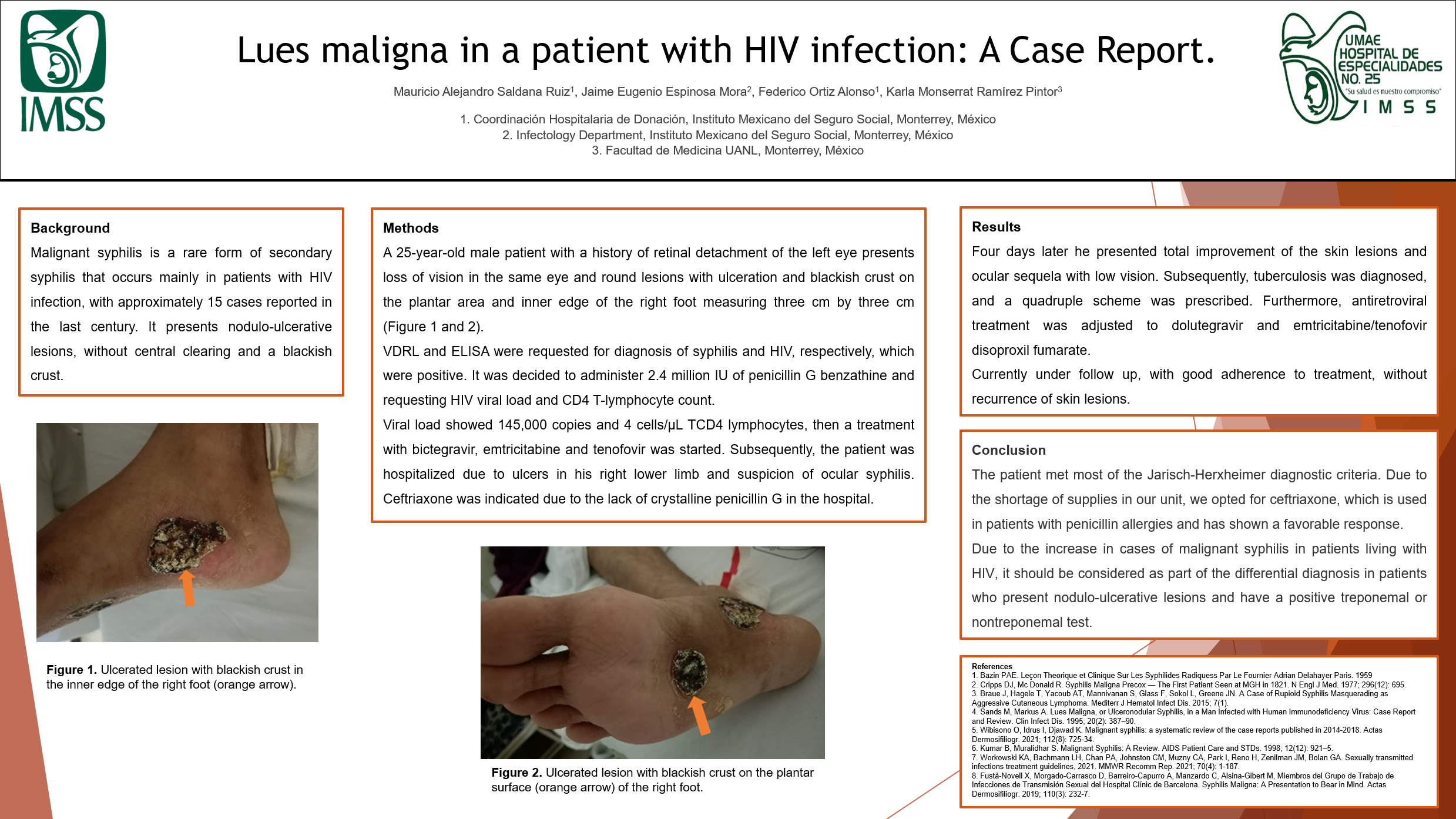Mauricio Saldana Ruiz
Conference 2024 Poster
Poster Title
Lues maligna in a patient with HIV infection: A Case Report.
Authors and Affiliations
Mauricio Alejandro Saldana Ruiz1, Jaime Eugenio Espinosa Mora2, Federico Ortiz Alonso1, Karla Monserrat Ramírez Pintor3
1. Coordinación Hospitalaria de Donación, Instituto Mexicano del Seguro Social, Monterrey, México
2. Infectology department, Instituto Mexicano del Seguro Social, Monterrey, México
3. Facultad de Medicina UANL, Monterrey, México
Abstract
Background
Malignant syphilis is a rare form of secondary syphilis that occurs mainly in patients with HIV infection, with approximately 15 cases reported in the last century. It presents nodulo-ulcerative lesions, without central clearing and a blackish crust.
Methods
A 25-year-old male patient with a history of retinal detachment of the left eye presents loss of vision in the same eye and round lesions with ulceration and blackish crust on the plantar area and inner edge of the right foot measuring three cm by three cm (Figure 1 and 2).
VDRL and ELISA were requested for diagnosis of syphilis and HIV, respectively, which were positive. It was decided to administer 2.4 million IU of penicillin G benzathine and requesting HIV viral load and CD4 T-lymphocyte count.
Viral load showed 145,000 copies and 4 cells/µL TCD4 lymphocytes, then a treatment with bictegravir, emtricitabine and tenofovir was started. Subsequently, the patient was hospitalized due to ulcers in his right lower limb and suspicion of ocular syphilis. Ceftriaxone was indicated due to the lack of crystalline penicillin G in the hospital.
Results
Four days later he presented total improvement of the skin lesions and ocular sequela with low vision. Subsequently, tuberculosis was diagnosed, and a quadruple scheme was prescribed. Furthermore, antiretroviral treatment was adjusted to dolutegravir and emtricitabine/tenofovir disoproxil fumarate.
Currently, under follow up, with good adherence to treatment, without recurrence of skin lesions.
Conclusions
The patient met most of the Jarisch-Herxheimer diagnostic criteria. Due to the shortage of supplies in our unit, we opted for ceftriaxone, which is used in patients with penicillin allergies and has shown a favorable response.
Due to the increase in cases of malignant syphilis in patients living with HIV, it should be considered as part of the differential diagnosis in patients who present nodulo-ulcerative lesions and have a positive treponemal or nontreponemal test.


Leave A Comment